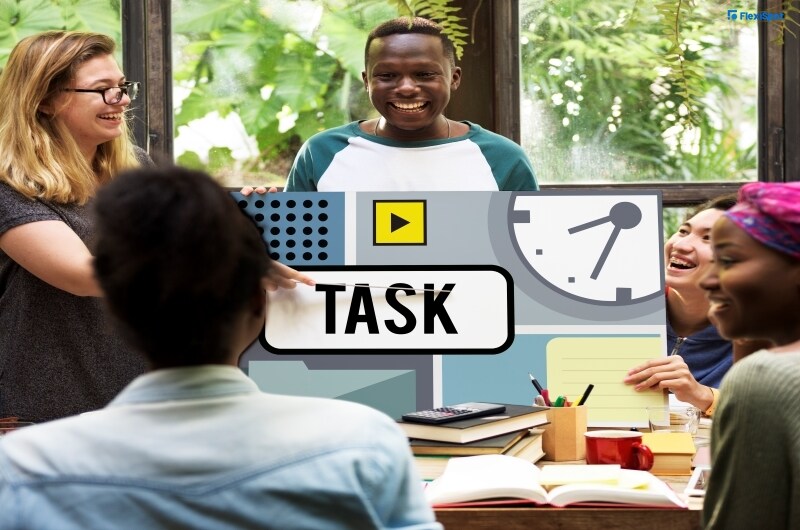Dealing with different personalities is arguably one of the most difficult tasks of a manager. An effective manager or boss is one that will be able to address conflict in the workspace or the struggles of the team members to build rapport with one another. An effective manager would be able to identify what these challenges are so that he or she could craft solutions right away.
Issues must be addressed and not allowed to just vanish out of thin air. When these issues are resolved properly, the team becomes stronger because each employee is able to perform at their optimum level.
You can only solve problems when you have an understanding of what usually happens on the ground. You have to be able to get to the root of the problem in order to make a sustainable solution for it. Of course, challenges vary depending on the nature of the industries but since we’re talking about work, there are of course common struggles that emerge across different fields. Below are some tips on how to effectively address these problems.

1. When giving a directive for a project, be clear and concise.
The employee must know what is expected from him or her in a project. Any miscommunication at this stage of a project would lead to work that has to be discarded, costing the company money. This is why a clear direction is highly important to avoid doing irrelevant work. Workers are more efficient with clear directives and produce quality output when given proper direction.
Of course, when you give a project to an employee, it’s not enough to pass an e-mail. There should be a meeting discussing the project and towards the end of it, ask your employee to explain what he or she will be doing for it. Afterward, work out a regular schedule for you to check their progress. All of these must be in the record to avoid any misunderstanding or miscommunication. The minutes of the meeting will be used by both of you as a reference or guide.

2. Build trust among everyone in the team.
One of the most basic attributes of human development is trust. You have to be able to give your full trust to another person so that you can go about your day without worries. At work, employees in the same team must have mutual trust for one another so that they could each productively work on their own. It will also be easier for them to ask for help from one another when they are unable to do a task or do not understand something from the directive. Problems are solved more effectively when there is trust. \
Trust is built in the long run. A gauge is your colleague’s reliability on past projects, if he or she was able to deliver his or her tasks without a glitch or if with a glitch, was transparent about it. If you’re superior, you could arrange team-building activities to acquaint your staff with one another.

3. Adjust to a situation accordingly.
Make it a point to talk to an applicant and not just let the human resources department decide. You out of everyone knows how members of the teamwork and what is the office culture that prevails. You would want to add someone who will be able to jive with everybody and the culture that you have. You don’t want someone with a personality that might class with the personalities of those already working for the company. If you find two people in conflict, listen to each of their stories and adjust their tasks to hopefully make them work in harmony. If necessary, you can tap a mediator, an unbiased third party, to resolve the conflict and help two opposing parties go past their differences.
A workplace that is able to handle conflict well will increase morale and make it easier for staff members to cooperate with company policies and fulfillment of goals.
For efficiency problems, you may invest in ergonomic furniture for each team member. It might be costly but the return on investment is worth it. Flexispot’s standing desks, standing desk converters, desk bikes, and other ergonomic furniture will sharpen focus and boost productivity.

4. Relay all project-related information.
Transparency is a key component of trust. You can build trust among team members when you exercise transparency yourself. Relay all information about the project to all concerned parties and you could expect that the employees won’t be withholding information from one another as well. It will just be counterproductive if one team member receives insufficient information that may lead him or her to do unrelated work. Always ask for updates from everybody and reiterate how important it is for them to be transparent with the progress of their task or contribution to certain projects. Remember, personal interests should never be prioritized on top of the betterment of the whole team.
Vital information should include the expectations of each employee in the team. You must encourage each and every member to openly share what they need to finish their task and what help they expect from the whole team. This will decrease the chances of work duplication or delay in a project. You may help your team members be open by providing different communication methods and platforms. For instance, you may start an email thread or a group chat where all concerned parties are included and looped in.

5. Help your team members work on their personal differences.
Again, each member is a different person. They will of course approach a goal differently. You shouldn’t allow them to work based on their personal preferences. There must be a consensus on what should be followed so that when conflict arises, you could go back to this agreed policy to again meet halfway and solve the conflict. Employees will have different habits. Some are more organized than others. Some are proactive while there are others who are not. Some prefer to speak less and work more while some like discussing everything. You won’t be able to change these people for who they are because it’s also actually what makes your team unique and fun. But there must be a code of conduct so that everyone will be clear of what others consider inconsiderate and inappropriate.

6. Work on a common goal.
From the very start, everyone should be working on a common goal. All of you must be in agreement on what your end product will be. This will help guide everyone and would also ensure consistency and cohesion of work. Always check in with the members so that you are on the same page in terms of your goal.